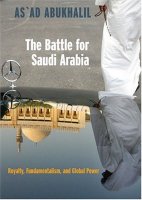Akram, Angry Arab's correspondent in Syria, wrote me this account:
"For the first time ever, Damascus is Damascuses (or at least, this is what turned out to be the case). And this depends on who tells.
"For the first time ever, Damascus is Damascuses (or at least, this is what turned out to be the case). And this depends on who tells.
First
of all, the heart of the city, the area not being touched by the ongoing
fighting. People come and go, filling the streets trying to recover their lives.
Stores are open and hawkers raise their
voices in an attempt to promote their goods.
Vegetables are available and their prices fell sharply while, in
contradiction to what the government announces, gasoline is still rare,
something that you may discover, right away, by just taking a look at the long
queues in front of gas stations. But you can, easily, realize how false is this
image of a city full of life, by looking in the eyes of people or by hearing
their discussions. Then only, you can detect the amount of anxiety and
uncertainty that fills their hearts.
The
second Damascus can be seen in the accounts of the displaced people or their
relatives. A huge amount of angry of what they describe as brutal practices of
the army in the regions that witness combats. You can hear sad stories about
indiscriminate shelling, homes that have been stormed and their poor contents
that have been destructed, and mass arbitrary arrests of young men. A
Palestinian taxi driver who looked exhausted told me that, since the early
morning (Thursday), he was trying to evacuate his family from Al-Yarmouk, a
large Palestinian refugee camp located South Damascus, until he succeeded by the
noon. Another one, a friend, managed to evacuate half of his parents from
Al-Sbeineh, a poor quarter to the south of Damascus that is waiting his turn in
the "cleaning" campaign carried out by the Syrian army, while the other half
preferred to stay at home because they didn't want to be "humiliated". The two
men said the military operation succeed only to hit the civilians while gunmen
could easily escape waiting for the army to go away before they came back.
Increasing tensions are taking place in the regions that received displaced
people. In Jaramana, a Damascene suburb, some dislocated people from the
stricken city of Douma and who are sheltered in two public schools wrote
anti-regime graffiti, something that raised the ire of the residents who are
calling for them to be expelled. The same applies on Sahnayia suburb, where some
of the displaced people of Al-Tadamoun and Al-Qadam neighborhoods, tried to
organize anti-regime demonstrations.
The
third Damascus is only seen on TV, in the Ramadan televised series.
Damascus of the 19th and the early period of the 20th
century, Damascus of the traditional quarters, the gossips of women and their
naïve plots, the mannish acts of men with traditional costumes and big
mustaches. Or another "modern" Damascus that few know about, Damascus of the
villas and large apartments and luxury cars and international restaurants,
Damascus of colorful girls and stylish men. The few series that tries to "deal
with the situation" are late for at least one year in a manner that makes you
laugh loudly.
The
fourth Damascus is located in news broadcasts, news tickers and comments of
unknown people described as "analysts" (Nasser Qandeel is the brightest star of
the Syrian channels) that fill the screen: our brave military forces are
still chasing the remnants of terrorists killing and arresting tenths of
them, citizens (in this area or that) are grateful to the army for
restoring safety and security after the terrorist gangs wreaked havoc in their
neighborhoods, the Syrian army is fighting the final battle in Aleppo
(earlier in Damascus), the cosmic conspiracy is living its final
moments, the BRICS will retaliate, ...
Damascus is no more one Damascus, and it this isn't only
because of the sectarian cracks which began to appear on its old
face."








